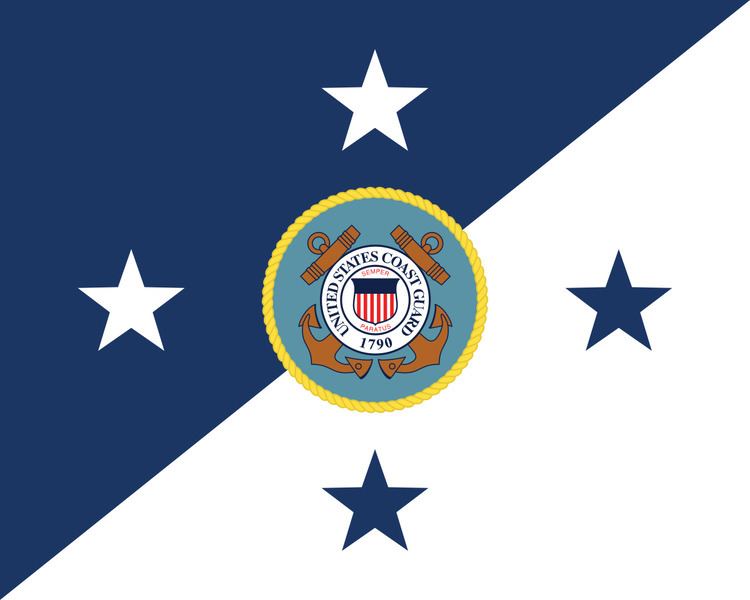Formation 14 December 1889 | ||
 | ||
The Commandant of the United States Coast Guard is the service chief and highest-ranking member of the U.S. Coast Guard. The Commandant is an admiral, appointed for a four-year term by the President of the United States upon confirmation by the United States Senate. The Commandant is assisted by a Vice Commandant, who is also an admiral, and two Area Commanders (U.S. Coast Guard Pacific Area and U.S. Coast Guard Atlantic Area) and two Deputy Commandants (Deputy Commandant for Operations and Deputy Commandant for Mission Support), all of whom are vice admirals.
Contents
Though the United States Coast Guard is one of the five military branches of the United States, unlike the other service chiefs, the Commandant of the Coast Guard is not a member of the Joint Chiefs of Staff. The Commandant is, however, entitled to the same supplemental pay as the Joint Chiefs, per 37 U.S.C § 414(a)(5) ($4,000 per annum in 2009), and is accorded privilege of the floor under Senate Rule XXIII(1) as a de facto JCS member during Presidential addresses. The Commandant is also the only service chief who maintains operational command over his service. The Commandant reports to the President, via the Secretary of Homeland Security. Prior to the creation of the Department of Homeland Security in 2003, the United States Coast Guard operated under and the Commandant reported to the Secretary of Transportation from 1966 to 2003, and the Secretary of Treasury from 1790 until 1966.
History
The title of Commandant dates to a 1923 act that distributed the commissioned line and engineer officers of the U.S. Coast Guard in grades. Before 1923, the rank and title of the head of the Coast Guard was "captain-commandant." The rank "captain-commandant" originated in the Revenue Cutter Service in 1908. The original holder of that rank was the Chief of the Revenue Cutter Service (also known as the Revenue Marine). The Coast Guard traces the lineage of Commandants back to Captain Leonard G. Shepard, chief of the Revenue Marine Bureau, even though he never officially received the title of Captain-Commandant. The Captain-Commandant position was created in 1908 when Captain Worth G. Ross was the first to actually hold the position. Although he was retired, Ross's predecessor, Captain Charles F. Shoemaker, was elevated to the rank of Captain-Commandant. Shoemaker's predecessor, Captain Shepard, had already died and was not elevated to the rank.
Chiefs of the Revenue Marine Bureau
Chiefs exercised centralized control over the Revenue Marine Bureau.
In 1849 the Revenue Marine Bureau was dissolved, and the Revenue Marine fell under the control the Commissioner of Customs until the Revenue Marine Bureau was again established in 1869.
List of Commandants
There have been 25 Commandants of the Coast Guard since the office of Chief of the Revenue Marine Bureau was transferred to a military billet. This includes Admiral Paul F. Zukunft, the current Commandant.
